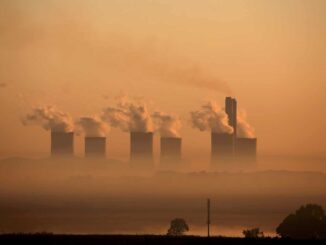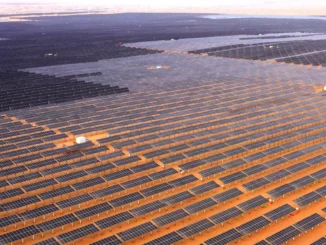
South Africa’s electricity supply challenges will not be solved by renewable energy alone as the country needs a “hybrid solution” that involves multiple sources of electricity generation.
This is according to former Eskom COO Jan Oberholzer, who told BizNews that as Eskom’s old coal-fired power stations go offline, they cannot be fully replaced by renewables.
The average age of Eskom’s coal fleet, excluding Medupi and Kusile, is 44 years, with many plants set to be decommissioned before the end of the decade.
Current estimates indicate that 11,000 MW of generation capacity will have to be decommissioned by 2030.
As these old power stations end their lives, generation capacity will decrease, and renewables cannot effectively replace this.
“When does the sun shine and the wind blow? It is always at the time you do not need it,” Oberholzer said.
You need a hybrid solution, which involves more stable energy sources in the form of coal, gas, nuclear, or hydro. Another solution is to invest heavily in storage technology, which the country does not have the finances to do.
“I believe that until we have taken this extremely seriously, we will be sitting with electricity supply challenges in South Africa,” Oberholzer said.
The unreliability of renewable energy will require excess capacity to be built. To replace the 11,000 MW lost from decommissioning coal plants, 50,000 MW of renewable capacity will have to be built.
This was revealed by the chairman of the South African Independent Power Producers Association, Brian Day.
Day said renewable energy is the only solution that allows such a large capacity to come onstream within a decade.
However, renewable energy is highly inefficient, with solar and wind generation only operating at 35% to 45% capacity, as the sun does not always shine and the wind does not always blow.
Using a capacity factor of 40% and assuming that Eskom’s current generation shortfall will have to be covered, South Africa needs 50,000 MW of renewable capacity by the end of the decade.
Eskom estimates that 53,000 MW will be added to the grid by 2030, while the Presidential Climate Commission estimates up to 60,000 MW will need to be built.
This will require Eskom’s grid to be upgraded and develop storage capacity for renewables along with backup power in the form of gas, coal, or nuclear.
Day said this provides an enormous opportunity for companies in South Africa and the economy more broadly. Investment on this scale will drive economic growth and provide employment.
He urged the government and the private sector to expand local manufacturing capacity for renewable technology and develop plans to reskill workers.
Source : Dailyinvestor.com
ENB Top News
ENB
Energy Dashboard
ENB Podcast
ENB Substack



